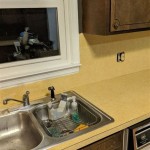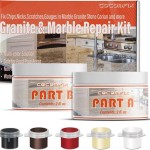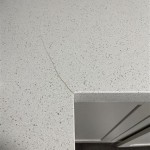How to Polish Epoxy Countertops
Epoxy countertops, known for their durability and stylish appearance, can benefit from regular polishing to enhance their shine and protect their surface. Polishing epoxy countertops removes scratches, imperfections, and dullness, restoring their luster and extending their lifespan. This article provides a comprehensive guide to polishing epoxy countertops, covering the necessary steps and techniques for achieving a professional-looking finish.
Step 1: Preparation
Proper preparation is crucial before polishing epoxy countertops. This includes cleaning the surface and protecting surrounding areas. Start by cleaning the countertop thoroughly with a mild soap and warm water solution. Use a soft cloth or sponge to scrub away dirt, grime, and any residues. Rinse the surface thoroughly with clean water and allow it to dry completely. Next, protect surrounding areas from accidental splashes or spills. Cover cabinets, backsplashes, and appliances with a drop cloth or plastic sheeting to prevent damage.
Step 2: Sanding
Sanding is essential for removing scratches, imperfections, and dullness from the countertop surface. Use fine-grit sandpaper, starting with 400-grit and gradually progressing to 800-grit. Sand the countertop in a circular motion, applying gentle pressure. Avoid sanding in one direction, as this can create streaks or unevenness. Work in small sections, overlapping each pass slightly to ensure an even finish. After sanding, remove any dust particles with a damp cloth. Repeat the sanding process with progressively finer grits until the desired level of smoothness is achieved.
Step 3: Polishing
Polishing is the final step in restoring the shine and luster of epoxy countertops. Use a polishing compound specifically designed for epoxy surfaces. Apply a small amount of compound to a clean polishing pad or cloth. Work the compound into the countertop surface in a circular motion, applying moderate pressure. Continue polishing until the desired level of shine is achieved. For deeper scratches, use a rotary polisher with a wool buffing pad for faster and more efficient results. Always follow the manufacturer's instructions for the specific polishing compound used.
Step 4: Sealing
Sealing epoxy countertops is an optional step but highly recommended for enhanced protection and durability. Choose a sealant specifically designed for epoxy surfaces. Apply the sealant evenly to the countertop surface, using a clean cloth or sponge. Allow the sealant to dry completely according to the manufacturer's instructions. Sealing helps prevent stains, water damage, and discoloration, maintaining the countertop's pristine condition for years to come.
Step 5: Maintenance
Regular maintenance is key to preserving the polished finish and extending the lifespan of epoxy countertops. Use a mild soap and warm water solution to clean the countertop weekly. Avoid abrasive cleaners, harsh chemicals, and scouring pads, as these can damage the surface. Dry the countertop thoroughly with a soft cloth to prevent water spots. Regularly inspect the countertop for any signs of wear and tear. Polish the countertop as needed to restore its shine and address any minor scratches or imperfections.

Polish Epoxy

How To Re Coat Epoxy Countertops Hide Damage Improve Look Fix Installation Fails

How To Sand And Polish Epoxy Resin A Mirror Finish Step By Guide

How To De Gloss And Polish Epoxy Countertop Matte Finish

Best Ways To Polish Epoxy Countertops

How To Sand Polish Epoxy Resin Best Results

Epoxy Prep How Clean Surfaces Provide A Stronger Bond

Polishing Epoxy Resin How To What Use Clear Casting

Diy Marble Epoxy Over Old Granite Countertops How To Do

Is Epoxy For Countertops The Best Way To Seal Your Surfaces
See Also








